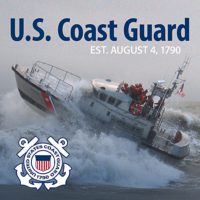
Anchoring equipment
Let’s familiarize ourselves with the equipment when anchoring a boat. The Anchor Rode consists of all the pieces and parts used for anchoring. In addition to the anchor itself, the rode includes the line, rings, chain leader, and swivels to name a few. Nylon is a great choice for line as its elasticity helps absorb some of the tension. Today’s most popular anchors are the Plow and the Danforth. Once submerged they will head heaviest part to the bottom first. Certainly an import piece of their design.
Anchoring Procedure
So first and foremost, navigation charts will tell the bottom type. This too is very important. The Plow and the Danforth are good all purpose anchors. For this reason they are also the most popular anchors. Do pay close attention to where you’ll be anchoring. There is a reason you don’t see boats anchoring in specific areas. There are simply areas that are no anchor zones. Before we get to the procedure lets look at the scope. Scope is the amount of line we’ll let out to anchor. Scope is anywhere from 5 times the water depth to 10 times the water depth. This range represents calm waters (5x) or stormy waters (10x).
Firstly, always anchor from the bow. Secondly, let the required amount of line out. Thirdly, allow the current to set the anchor. Finally, take a look around and find a few fixed reference points. Use these points to make sure you are anchored.
Finer Points of Anchoring a Boat
Never throw the anchor rode overboard. Throwing tends to foul and knot the line. Oh, you may want to make sure it’s tied to the boat first! If the current doesn’t set the anchor you can. Gently back down on the anchor to set it. This is done using idle speed reverse. Envision the boat may somewhat “circle” the anchor. This circle should be free and clear of any obstacles.
Never anchor the boat from the stern. The stern is squared off and should not be into the current. On the other hand we should always anchor from the bow. The bow sits naturally in the water into the current.
The scope of line gives us a long low angle from the anchor to the bow. Plow and Danforth anchors are designed with that sharp back angle for this specific reason. When the current takes the boat away from the anchor the line pulls and starts to tip the anchor. This is how we set the point(s). The chain leader helps by giving us a couple of extra degrees in angle.
IN CONCLUSION
Most importantly, there are no egos when passengers’ lives are in your hands. As always, be smart, be safe, and happy boating!
Please visit our Public Course Schedule to view all of the classes we have available for you. Zoom Classes are available now. There has never been an easier way to get your Boating Certificate
Here is a great article by the United States Coast Guard regarding anchoring a boat: Learning to Set and Retrieve an Anchor Is an Important Safe Boating Skill | Boating Safety (boatingsafetymag.com)






